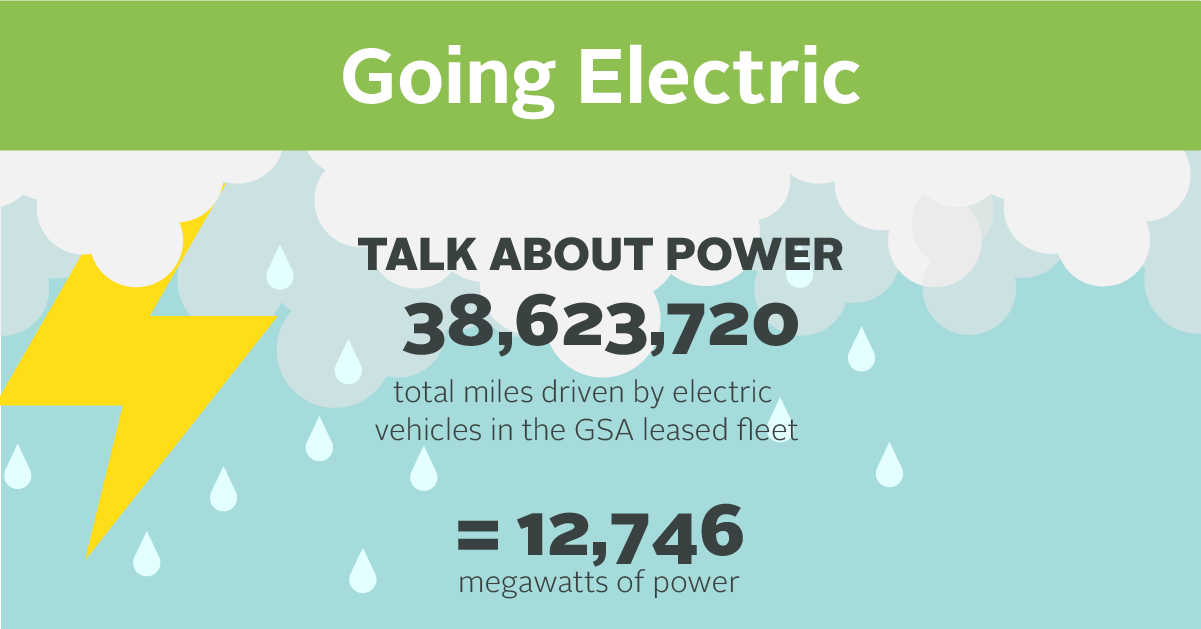
#GoGreen: Benefits of Electric Vehicles
Post filed in: Fleet
Electric vehicles (EVs) have many benefits for the environment. EVs lower fuel costs and they have zero exhaust emissions when running on electricity. Over the past 10 years, EVs and their infrastructure have greatly improved.
The Biden-Harris Administration’s Executive Order (EO) on Tackling the Climate Crisis at Home and Abroad makes clear the need for swift and significant action “in order to avoid the most catastrophic impacts” of climate change. One of those actions, listed in Sec. 205 of this EO, directs government fleets to move towards zero-emission vehicles (ZEVs).
Zero-Emission Vehicles (ZEVs)
A ZEV means any light-duty vehicle, light-duty truck, or heavy-duty vehicle conforming to the applicable Zero-Emission Vehicle standards (40 CFR § 88.102-94).
GSA Fleet offers three distinct vehicle types that are considered certain degrees of zero emission.
- Battery Electric Vehicle (BEV), an all-electric vehicle powered exclusively by a battery that produces zero tailpipe emissions;
- Plug-in Hybrid Electric Vehicle (PHEV), a vehicle propelled by both an internal combustion engine and an electric motor, and produces zero exhaust emissions when running on only electricity; and,
- Fuel Cell Electric Vehicle (FCEV), a vehicle fueled with pure hydrogen gas that produces no tailpipe emissions, only emitting water vapor and warm air.
Currently, we offer 15 make/models of BEVs, five make/models of PHEVs and one FCEV model. Combined, our EVs have driven over 38 million miles using 12,746 megawatts of power.
Cost Savings

On average, running an electric vehicle only on electricity costs almost half as much to fuel with, so running electric vehicles only on electricity will reduce fuel costs. The cost to fuel EVs with electricity is represented in electric gallons (eGallons), with every eGallon being equal to a gallon of gasoline. See the current eGallon price and regular gasoline price in your state in the U.S. Department of Energy’s eGallon comparison tool.
Mile Range and Infrastructure
A vehicle’s mile range is how many miles a vehicle can cover before it runs out of power. In fiscal year 2010, the first EVs offered by GSA Fleet had a mile range of only 62 miles per charge. However, now the EVs available through GSA Fleet have all-electric mile ranges of 300 miles per charge.
As EVs design improved, so has the supporting infrastructure improved. Similar to gas stations, charging stations supply electric energy to EVs, recharging them. The U.S. Department of Energy’s Alternative Fueling Station Locator maps all the public and workplace charging stations throughout the United States, helping you find charging stations in your area. To date, there are more than 45k charging locations with more 115k charging outlets in the United States.
With the new directive to move towards a zero-emission federal fleet, we need to increase the number of charging stations available. Leading by example, GSA’s Electrification of the Federal Fleet will tackle charging station infrastructure.
We continue to work with the automotive industry, the charging station infrastructure industry, and other federal partners to develop an action plan.
Find out how to purchase charging infrastructure at www.gsa.gov/evse.

 U.S. General Services Administration
U.S. General Services Administration
